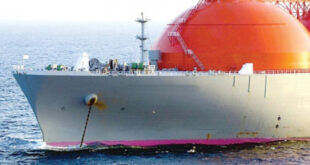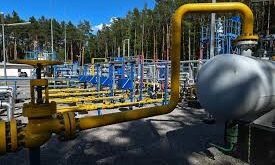On Monday in Nagoya. energy ministers from nine countries in Asia and the rest of the world will convene for the seventh annual LNG Producer Consumer Conference. which will also be attended by officials from international organizations and private-sector participants. The central topic under discussion is what measures can we collectively undertake to expand liquefied natural gas use and meet the growing requirements for energy among Asia’s fast-growing economies.
For the last two years. our respective research organizations. the Institute of Energy Economics Japan (IEEJ) and the Energy Policy Research Foundation. Inc. (EPRINC) in Washington have been privileged to be part of this effort. We have joined forces to produce assessment on the future role of LNG in Asian power and fuel markets.
This is more than a paper exercise. our respective governments are looking for concrete policy recommendations to address the emerging demands of a growing LNG market. These recommendations will directly support the Japan-U.S. Strategic Energy Partnership in which both countries bring their unique expertise to the development of natural gas-fired electricity generation. regasification facilities in Asia and new LNG supplies from the U.S. shale gas revolution.
At the 2017 LNG conference in Tokyo. Economy. Trade and Industry Minister Hiroshige Seko announced Japan’s commitment to provide $10 billion in financing for LNG related projects. such as natural gas power development and LNG regasification facilities in Asia or for Asia. and a companion program to provide capacity building to lift technical skills in Asian countries seeking greater use of natural gas and LNG imports. At the same event. Deputy U.S. Secretary of Energy Dan Brouillette reinforced the U.S. commitment to expand LNG exports and remain a reliable supplier.
The program announced by Seko is underway and Japanese expertise from Japan Oil. Gas and Metals Corp. has already begun training programs in prospective new LNG consuming centers. The Nippon Export and Investment Insurance and Japan Bank for International Cooperation have also brought financial assistance for regasification facilities in Asia and U.S. LNG export facilities.
The U.S. has undertaken several initiatives to improve the regulatory process for approval of LNG exports. and considerable headway has been made to ensure adequate infrastructure to transport feedstock for U.S. LNG export facilities from America’s vast natural gas reserves. These measures are important as Asia seeks fuel diversity. improved air quality and strategies to address longer-term climate risk. Nevertheless. bringing new LNG liquefaction projects to final investment decision remains challenging in a market in which buyers are reluctant to make long-term purchase commitments.
We do not have all the answers and purposely have reached out to a wide range of experts. government officials. and market participants. For 2018 alone. we held three workshops of industry experts. policy research organizations (think tanks). and experts. One under the auspices of the Economic Research Institute for ASEAN and East Asia in Jakarta. a subsequent meeting in Tokyo at IEEJ headquarters with Japanese industry executives. followed by a third meeting organized by EPRINC in Washington. The final workshop brought together experts. industry representatives. government officials and representatives from existing and prospective Asian demand centers.
Rising LNG exports from the U.S. and the development of consuming centers in Asia require large capital commitments and sophisticated financial structures. These projects must have the capacity to withstand 20 years of ups and downs in the LNG market. But the old way of structuring LNG projects is not enough to bring growth to this market. As new Asian entrants come to the LNG market it is clear they are more price-sensitive than traditional importers such as Japan and often unwilling to make 20-year firm commitments. These new consumers are demanding flexibility to address price and demand risks.
A new LNG market is emerging to address these concerns. and it may ultimately look like a highly modern oil market with extensive arbitrage. futures markets. and transparent physical and financial trading systems. But the current LNG market lacks many of the common transparent features of oil markets. We need a much more transparent market for LNG price discovery and eliminating destination restrictions. which Japan’s Fair Trade Commission announced could be incompatible with the anti-competitive law. to permit markets to reach arbitrage remains essential. We also need to assist new entrants into the Asian LNG market with capacity building in human capital to structure competitive electricity markets. build complex regasification facilities and structure complex business structures. New investment vehicles are needed to address the reluctance of financial markets to make long term commitments without 20 year “take or pay requirements.“ which could also be anti-competitive by FTC standards. The good news is some interesting initiatives are now emerging to address market uncertainties.
A final note of optimism. The Japan-U.S. cooperative effort on LNG provides a positive signal that the two great democracies of the Pacific. whatever short-term disputes might arise in this long and important alliance. remain bound together by shared values and interests. including sustaining stability throughout the Pacific Rim. Much like the LNG market. the alliance is a long-term commitment.
 Iran Energy News Oil, Gas, Petrochemical and Energy Field Specialized Channel
Iran Energy News Oil, Gas, Petrochemical and Energy Field Specialized Channel




